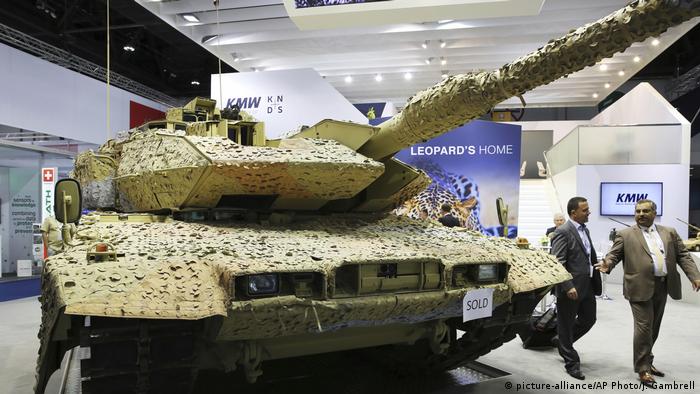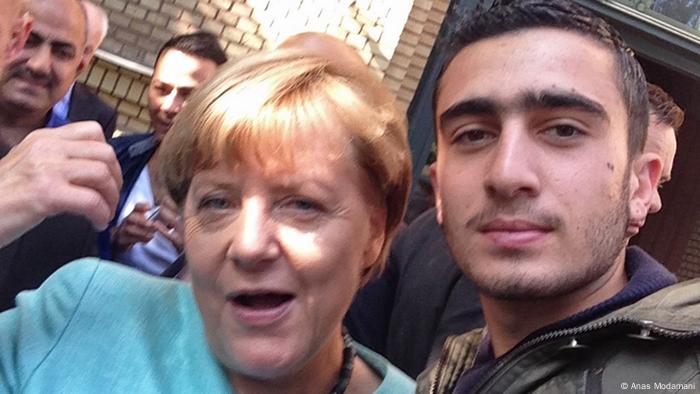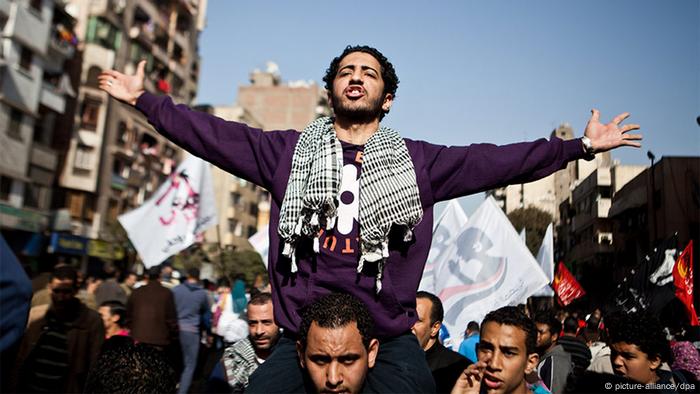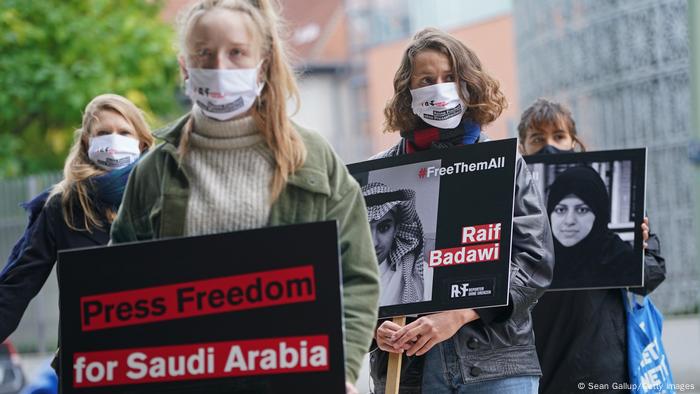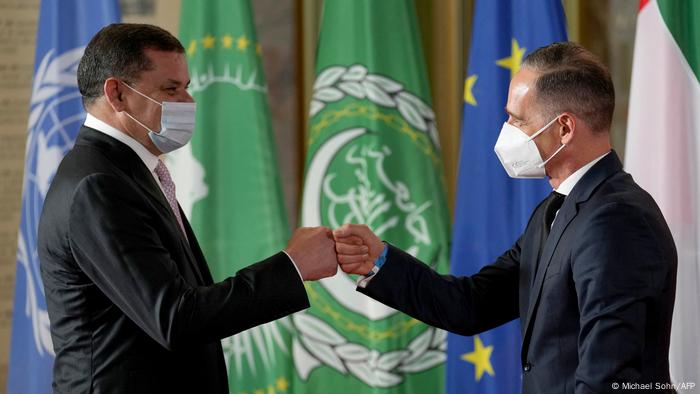Pope visit a sign of inclusion for Slovakia’s excluded Roma
By NICOLE WINFIELD

1 of 19Pope Francis waves to faithful holding Vatican flags as he arrives on his pope-mobile to celebrate a Byzantine rite Mass at Mestska sportova hala Square, in Presov, Slovakia, Tuesday, Sept. 14, 2021. Pope Francis is on a four-day pilgrimage to Hungary and Slovakia. (AP Photo/Darko Vojinovic)
KOSICE, Slovakia (AP) — Pope Francis traveled to the far east of Slovakia on Tuesday to meet with the country’s Roma in a gesture of inclusion for the most socially excluded minority group in Slovakia, who have long suffered discrimination, marginalization and poverty.
Francis’ visit to the Lunik IX settlement in Kosice is one of the highlights of his four-day pilgrimage to Hungary and Slovakia. It’s his first trip since undergoing intestinal surgery in July and marks the restart of his globetrotting papacy after a nearly two-year coronavirus hiatus.
Lunik IX is the biggest of about 600 shabby, segregated settlements where the poorest 20% of Slovakia’s 400,000 Roma live. Most lack basics such as running water or sewage systems, gas or electricity.
The “pope of the peripheries” has long sought to meet with society’s most marginal during his foreign trips, making sure to always include visits to slums, ghettos or prisons where he can offer words of encouragement, solidarity and welcome.
Francis was starting the day by celebrating a Byzantine rite Mass in Presov, near Kosice, in recognition of the country’s Greek-Catholic believers. During the chant-filled, open-air Mass, Francis recalled the persecution endured by all Christians during communist rule.
“Here I think of the martyrs who in this nation bore witness to the love of Christ in troubled times, when everything counselled silence, taking cover, not professing the faith,” he said. “How many generous persons suffered and died here in Slovakia for the name of Christ!”
Organizers expected some 40,000 people, and well before Francis’ arrival they had filled the outdoor sports arena as a choir sang hymns. They cheered and wildly waved the yellow and white flags of the Holy See as Francis looped through the site in his popemobile before the service.
“We came here at 3 a.m. to get the best spot,” said Slavka Marcinakova, a local resident from Presov. “Pope coming to Slovakia — you have an opportunity like this only once in a lifetime, we are so happy for that.”
Among those on hand for the Mass was Polish Cardinal Stanislaw Dziwisz, the longtime aide to St. John Paul II, the Polish pope who made three visits to Slovakia during his quarter-century papacy.
The Rev. Michal Ospodar, a Greek-Catholic priest from Kosice, said Francis’ visit would encourage the local faithful.
“Our church suffered a lot in the past because we were loyal to the pope,” he said. “Because of that we feel thankful that the pope came to our region and that we can meet him in person.”
Francis, 84, has appeared in good form during his trip, clearly enjoying being back on the road again after the coronavirus, and then his intestinal surgery in July, kept him cooped up in the Vatican. On Monday, he was welcomed by Slovakia’s Jewish community in a significant moment of reconciliation, given the decades of distrust and tension following the Holocaust, when 68,000 Slovakian Jews perished in Nazi death camps.
Slovakia was led during World War II by a Catholic priest and president, Jozef Tiso, who oversaw some of the harshest anti-Jewish laws in Europe.
After the Mass and Roma encounter, Francis was meeting with Slovakia’s young people. He returns to Rome on Wednesday after celebrating his main big Mass in Sastin near the capital, the site of an annual pilgrimage each Sept. 15 to venerate Slovakia’s patron, Our Lady of Sorrows.
___
AP visual journalists Andrea Rosa and Luigi Navarra contributed.
Pope in Slovakia meets with Roma in 'eyesore' housing project
Pope Francis meets with Roma in a notorious housing project on day three of his Central Europe trip. The visit comes after he met with Holocaust survivors in Bratislava Monday.
Pope Francis traveled to the eastern Slovak city of Kosice Tuesday to meet with members of the Roma community in a dilapidated housing project, Lunik IX.
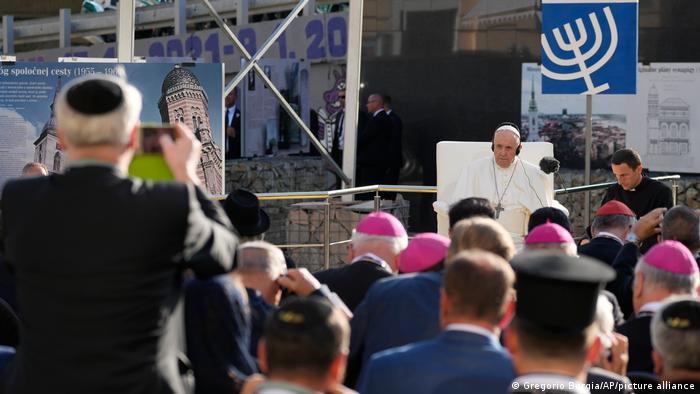
Pope Francis meets members of the Jewish community in Bratislava on Monday
The visit to Lunik IX is one of the highlights of his four-day swing through the Central European nations of Hungary and Slovakia and a gesture of inclusion for one of the country's marginalized and impoverished communities. On Monday, he met with Holocaust survivors in Bratislava, the capital.
One fifth of Slovakia's population belong to the Roma minority. They have long been excluded from society, generally living in segregated settlements that often lack basics like electricity and running water, heating and gas.
Villagers in Slovakia exclude Roma from their church services
In the days leading up to the pope's trip, politicians in Slovakia openly debated who was "to blame" for the inclusion of the "eyesore" Lunik IX with its rundown prefabricated buildings that are home to thousands on the Pope's itinerary.
Thomas Schumann, spokesperson for Renovabis, the Catholic relief organization for Central and Eastern Europe, told the DPA news agency he hoped the pope's visit would spur greater inclusivity of opportunities and education for members of the Roma community in Slovakia.
Tuesday began with Greek Catholic mass
Pope Francis started Tuesday with a large Byzantine rite open air Mass near Kosice in the city of Presov. There the pope recalled the persecution of Christians under communism.
"Here I think of the martyrs who in this nation bore witness to the love of Christ in troubled times, when everything counselled silence, taking cover, not professing the faith," the Pope told the gathered faithful. "How many generous persons suffered and died here in Slovakia for the name of Christ!"
Organizers expected 40,000 in attendance and an outdoor stadium had filled prior to his arrival by popemobile.
"We came here at 3 a.m. to get the best spot," Presov resident Slavka Marcinakova told AP, calling the opportunity to see the pope a "once in a lifetime" event.
On Tuesday evening, Pope Francis is scheduled to meet with young people at the outdoor football stadium in Kosice.
ar/rc (AP, dpa)
Your suffering is ours: Pope honors Slovak Holocaust victims
By NICOLE WINFIELD and KAREL JANICEK

1 of 15
Pope Francis prays as he meets members of the Jewish community in Bratislava, Slovakia, Monday, Sept. 13, 2021. Ahead of a rigorous two days hop-scotching around Slovakia, Francis is spending Monday in Bratislava where the highlight of his visit is the encounter at the capital's Holocaust memorial, built on the site of a synagogue destroyed by the communist regime in the 1960s.
(AP Photo/Gregorio Borgia)
BRATISLAVA, Slovakia (AP) — Pope Francis honored Slovakian Holocaust victims and atoned for Christian complicity in wartime crimes as he sought to promote reconciliation Monday in a country where a Catholic priest was president of a Nazi puppet state that deported tens of thousands of its Jews.
“Your history is our history, your sufferings are our sufferings,” Francis told members of Slovakia’s small, remaining Jewish community, standing in the shadow of the country’s Holocaust memorial.
Even though St. John Paul II made three trips to Slovakia, he never met here with the country’s Jews, evidence of the strained local Catholic-Jewish relations that endured in the post-war decades even with a Polish pope known for his outreach to Jews.
As a result, Francis’ welcome by the community — during the solemn 10-day period of repentance stretching from Rosh Hashana to Yom Kippur — was a significant step forward and was hailed as historic by local Jewish leaders who said it was chance to look to the future.
Francis is on the second day of a four-day pilgrimage to Hungary and Slovakia, his first big international outing since undergoing intestinal surgery in July. The 84-year-old pope has appeared in good form, walking around to greet well-wishers and clearly enjoying the enthusiasm of Slovaks after being cooped up in the Vatican for over a year of coronavirus lockdowns.
He was solemn on Monday afternoon, listening intently via headphones providing simultaneous translation as he heard testimony from a Holocaust survivor about the horrors of the Shoah and the enduring pain of the Jewish community.
“Let us unite in condemning all violence and every form of antisemitism, and in working to ensure that God’s image, present in the humanity he created, will never be profaned,” Francis said.
Slovakia declared its independence from Czechoslovakia in 1939 and became a Nazi puppet state with politician and Roman Catholic priest Jozef Tiso becoming the country’s president.
Under his rule, the country adopted strict anti-Jewish laws and deported around 75,000 Jews to Nazi death camps where about 68,000 perished.
Tiso was sentenced to death and hanged in 1947, and over the years scholars have unearthed archives showing that the Vatican under Pope Pius XII didn’t approve of Tiso’s policies and intervened to halt the deportation of Slovak Jews in 1942, though they resumed two years later after Nazi troops entered Slovakia at Tiso’s request.
Now, only about 5,000 Jews live in Slovakia, a largely Roman Catholic country of 5.5 million currently ruled by a four-party center-right coalition government.
Slovakia’s Catholic bishops over the years expressed regret for their wartime failings and asked forgiveness from the Jewish community, but an official process of dialogue only began after Slovak representatives from both faiths met with Francis at the Vatican in 2017.
Francis praised that encounter as a key moment in the path of Catholic-Jewish reconciliation that he said was necessary to “advance, in truth and honesty, along the fraternal path of a purification of memory, to heal past wounds and to remember the good received and offered.”
The head of the umbrella group of Slovakian Jewish communities, Richard Duda, said at the encounter that Francis’ visit was “historic,” and a “turning point” in relations, and that dialogue was the only way to achieve peaceful coexistence.
“We hope that the sincerity and availability for an open dialogue will allow us to one day put a final point even on the dark sides of the complicity which, during the terrible world war 80 years ago, marked relations between the people of this land,” he said.
While Francis’ visit marked a new step in Catholic-Jewish relations, it also served to remind Slovaks that Catholics also saved lives.
A Holocaust survivor, Tomas Lang, cited a Vatican embassy official at the time, Monsignor Giuseppe Burzio, as someone who “unceasingly tried to halt the antisemitism of the murderous regime of the time.”
And a Slovak Orsoline nun, Sister Samuela, told Francis of the several instances of Jewish children and their families who were hidden in Slovak convents and even the Vatican embassy itself.
Overall by 2019, 580 Slovaks were honored as Righteous Among the Nations by Israel’s Yad Vashem Holocaust museum.
The site of Francis’ encounter was significant: Bratislava’s Holocaust memorial stands on the site of a synagogue that was destroyed in 1969 by the communist regime to make room for a bridge. The synagogue had stood next to the city’s cathedral, and Francis said their proximity showed that Catholics and Jews had long lived in peaceful coexistence “and a striking sign of unity in the name of the God of our fathers.”
“Here, in this place, the name of God was dishonored, for the worst form of blasphemy is to exploit it for our own purposes, refusing to respect and love others,” he said.
“In this place, our histories meet once more. Here let us affirm together before God our willingness to persevere on the path of rapprochement and friendship,” Francis said.
Just last week, the Slovak government formally apologized for the racial laws that stripped Jews of their human and civil rights, prevented their access to education and authorized the transfer of their property to non-Jewish owners. The government took action on the 80th anniversary of the “Jewish Code,” considered one of the toughest anti-Jewish laws adopted in Europe during the war.
Lucia Hidveghyova, a leading Slovak expert on Jewish-Catholic relations, called Francis’ meeting with the Jewish community “very important” and the fruit of improving relations that got a major boost after the 2017 Vatican encounter, which resulted in the formation of joint committees.
“It’s true than that in the last five years, the dialogue between them on the official level has moved forward more than in the previous 50 years,” she said in a telephone interview.
“I believe that (by coming) he wants to further encourage the dialogue,” she said.
Maros Borsky, secretary of the dialogue commission between the Central Union of Jewish Religious Communities and the Catholic Church, said the pope’s visit can only help improve relations going forward.
“What happened in the past cannot be fixed, but it’s necessary to look into the future,” Borsky told The Associated Press.
___
Karel Janicek reported from Prague.










